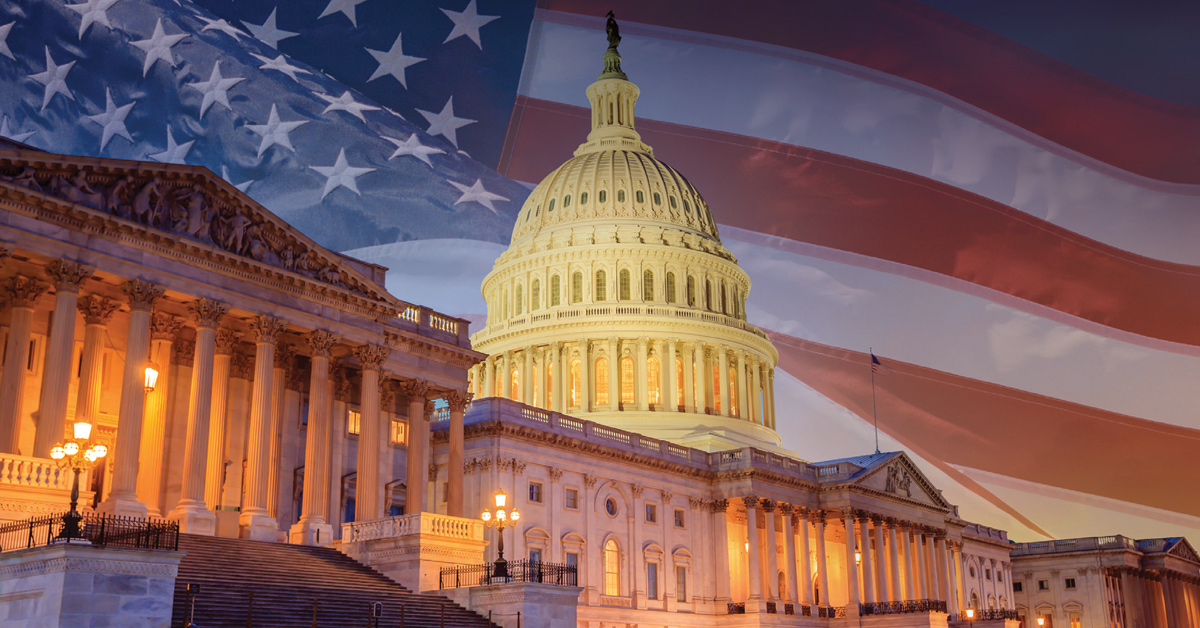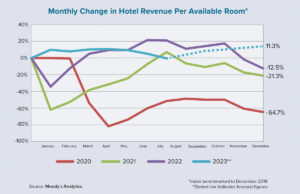One of the most historic areas in the U.S., the Atlantic Region comprises the states of Delaware, Maryland, North Carolina, South Carolina, Virginia and West Virginia along with the District of Columbia. This region is notable for its seaports and coastlines along the Atlantic Ocean, as well as several large and notable cities.
The dominant city in this region is Washington, D.C., which was created at the nation’s founding from territory belonging to Virginia and Maryland. The nation’s capital has a metro-area population of 6.28 million that extends to the Baltimore suburbs.
 This region’s highly diverse and mixed economy was hit hard and early by the COVID-19 pandemic. All of these states posted massive quarterly gross domestic product (GDP) declines in the past second quarter, ranging from -21.9% in Delaware to -32.6% in South Carolina. By September 2020, however, unemployment rates had dropped in all of these states after an initial jobless spike this past April. September unemployment ranged from 5.1% in South Carolina to 8.6% in West Virginia.
This region’s highly diverse and mixed economy was hit hard and early by the COVID-19 pandemic. All of these states posted massive quarterly gross domestic product (GDP) declines in the past second quarter, ranging from -21.9% in Delaware to -32.6% in South Carolina. By September 2020, however, unemployment rates had dropped in all of these states after an initial jobless spike this past April. September unemployment ranged from 5.1% in South Carolina to 8.6% in West Virginia.
Prior to the pandemic, the Atlantic Region’s economy was doing well. Personal income in these states was generally near or above the national average. The most glaring exception over the decades has been the coal-dependent economy of West Virginia, which lies entirely in the rugged Appalachian region and is among the poorest states in the country.
North Carolina, Virginia and Maryland have the largest economies in the region, ranking No. 12, No. 13 and No. 15, respectively, among all states in terms of annual GDP as of 2019. In contrast, West Virginia and Delaware were among the nation’s smallest economies at No. 41 and No. 42, respectively.
North Carolina is known for its large military bases that include Camp Lejeune and Fort Bragg, but it also has a strong manufacturing base. Northern Virginia’s Loudoun County is known as “Data Center Alley.” An estimated 70% of the world’s internet traffic flows through Loudoun County. Numerous large corporations are headquartered in Virginia, including Freddie Mac and Smithfield Foods. Maryland, meanwhile, is a hub for information technology and telecommunications.
Land-locked West Virginia’s economy depends heavily on mining its abundant coal and mineral deposits. Delaware’s favorable corporate tax code has made it the legal home of more than half of the publicly traded companies in the U.S.
In South Carolina, some 70,000 new manufacturing jobs were created between 2011 and 2019, according to the state’s department of commerce. Packaging companies Sonoco Products and Cryovac (the maker of bubble wrap) are two of the state’s largest companies. The tire company Michelin also is headquartered in the northwest corner of the state in Greenville.
 The pandemic has cast a cloud over the office market in the nation’s capital. The vacancy rate rose to a cycle high of 16.7% at the end of third-quarter 2020, up 2.5 percentage points year over year, Cushman & Wakefield reported.
The pandemic has cast a cloud over the office market in the nation’s capital. The vacancy rate rose to a cycle high of 16.7% at the end of third-quarter 2020, up 2.5 percentage points year over year, Cushman & Wakefield reported.
The D.C. market saw net negative absorption of 375,000 square feet in the third quarter. Asking rents, however, fell marginally to $56.46 per square foot. Notably, the share of new office leases as opposed to renewals and extensions dropped substantially. In the second and third quarters of this year, some 63% of the leasing activity involved renewals or extensions. Historically speaking, D.C. offices have averaged 60% new leases and 40% renewals.
Cushman & Wakefield stated that this could be a sign that companies were putting off making long-term decisions on their office needs until the pandemic and economic situation becomes clearer. To entice new tenants, many landlords were offering discounts and incentives, such as greater improvement allowances and early move-in periods, Cushman & Wakefield reported.
Focus: Aerospace
The Atlantic Region has become an important center for the aerospace industry. In Virginia, some 274 aerospace companies employ more than 27,000 workers. South Carolina’s aerospace industry took off when Boeing selected North Charleston in 2009 as the site of an assembly plant and distribution hub for its 787 Dreamliner. Aerospace now has an annual economic impact in the state of more than $19 billion, according to the South Carolina Department of Commerce.
Meanwhile, North Carolina has the second fastest-growing aerospace industry in the nation with more than 200 aerospace companies, according to the Economic Development Partnership of North Carolina. And in Maryland, more than 9,000 aerospace and defense contractors — led by Northrup Grumman, Lockheed Martin and Booz Allen Hamilton — generate $33 billion in GDP each year, the Maryland Marketing Partnership reported.
What the locals say
“Tenants are looking for reduced rent. They’re looking for free rent. They’re looking for additional tenant-improvement packages. Each landlord is approaching them in a different way based on what their situation is. … If you look at previous cycles of downturns and related recoveries, [Maryland] tends to be a little insulated from the real lows and from the real highs. We’re in a market in a region that continues to perform without significant impact [compared with] the overall market. While we are seeing a downturn, I think it will be similar to other downturns that we’ve seen. We will come out of this relatively faster than other major markets across the country.”

Karen Cherry
Vice president of office leasing, The Howard Hughes Corp.
3 Cities to Watch
Baltimore
 Baltimore is Maryland’s largest city and the 30th-largest city in the U.S. with a metro-area population of about 2.8 million. Located an hour’s drive northeast of Washington, D.C., Baltimore’s cost of living, including housing, is significantly less than that of the nation’s capital. Baltimore is home to several renowned colleges, including Johns Hopkins University, Towson University and the University of Maryland, Baltimore County.
Baltimore is Maryland’s largest city and the 30th-largest city in the U.S. with a metro-area population of about 2.8 million. Located an hour’s drive northeast of Washington, D.C., Baltimore’s cost of living, including housing, is significantly less than that of the nation’s capital. Baltimore is home to several renowned colleges, including Johns Hopkins University, Towson University and the University of Maryland, Baltimore County.
Norfolk
 Laid out as a town in 1682 by the Virginia General Assembly and located on Chesapeake Bay, Norfolk has some 242,000 residents today. Shipping, shipbuilding and light industry (such as chemical and textile manufacturing) are key economic drivers. The Sewells Point area of the city is home to Naval Station Norfolk, the world’s largest naval complex. Norfolk also serves as the North American headquarters for NATO. The city’s median household income is $49,146 and the poverty rate is 19.7%.
Laid out as a town in 1682 by the Virginia General Assembly and located on Chesapeake Bay, Norfolk has some 242,000 residents today. Shipping, shipbuilding and light industry (such as chemical and textile manufacturing) are key economic drivers. The Sewells Point area of the city is home to Naval Station Norfolk, the world’s largest naval complex. Norfolk also serves as the North American headquarters for NATO. The city’s median household income is $49,146 and the poverty rate is 19.7%.
Charlotte
 Charlotte is the largest city in North Carolina with a population of 905,318 and has 2.6 million metro-area residents, making it the nation’s 15th-largest city. The population has increased by nearly 24% since 2010, driven by an influx of new and expanded companies. The COVID-19 pandemic, however, has hit the city’s economy hard. The Charlotte Regional Business Alliance reported that the region lost 71,000 jobs in the first quarter of this year, or about 4.8% of all jobs in the area.
Charlotte is the largest city in North Carolina with a population of 905,318 and has 2.6 million metro-area residents, making it the nation’s 15th-largest city. The population has increased by nearly 24% since 2010, driven by an influx of new and expanded companies. The COVID-19 pandemic, however, has hit the city’s economy hard. The Charlotte Regional Business Alliance reported that the region lost 71,000 jobs in the first quarter of this year, or about 4.8% of all jobs in the area.
Sources: Appalachian Regional Commission; Britannica.com; Cushman & Wakefield; Economic Development Partnership of North Carolina; Expansion Solutions Magazine; Forbes; Freddie Mac; Maryland Marketing Partnership; Military OneSource; South Carolina Department of Commerce; Trading Economics; U.S. Bureau of Economic Analysis; U.S. Bureau of Labor Statistics; U.S. Census Bureau; U.S. Department of Labor; U.S. News & World Report; Virginia Economic Development Partnership; WorldAtlas.com; World Population Review




